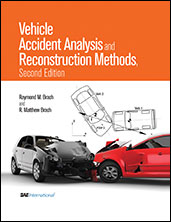Journal Article
Nonlinear Optimization in Vehicular Crash Reconstruction
2015-04-14
2015-01-1433
This paper presents a reconstruction technique in which nonlinear optimization is used in combination with an impact model to quickly and efficiently find a solution to a given set of parameters and conditions to reconstruct a collision. These parameters and conditions correspond to known or prescribed collision information (generally from the physical evidence) and can be incorporated into the optimized collision reconstruction technique in a variety of ways including as a prescribed value, through the use of a constraint, as part of a quality function, or possibly as a combination of these means. This reconstruction technique provides a proper, effective, and efficient means to incorporate data collected by Event Data Recorders (EDR) into a crash reconstruction. The technique is presented in this paper using the Planar Impact Mechanics (PIM) collision model in combination with the Solver utility in Microsoft Excel.



